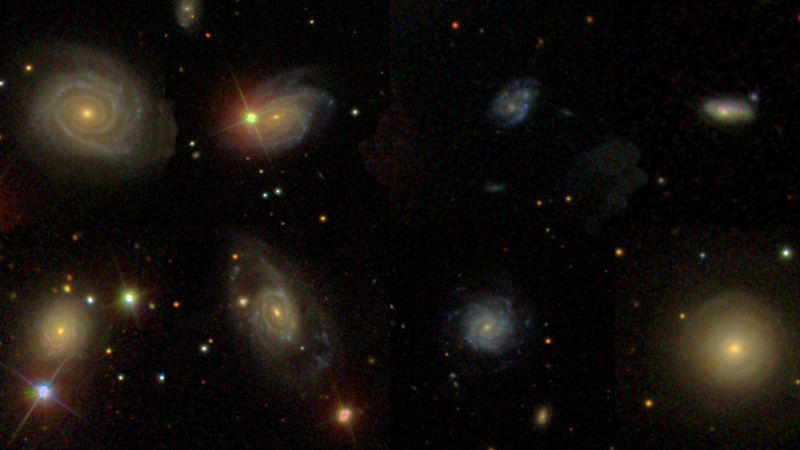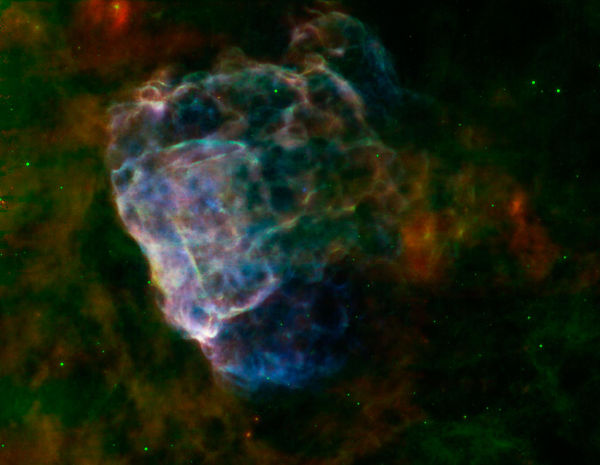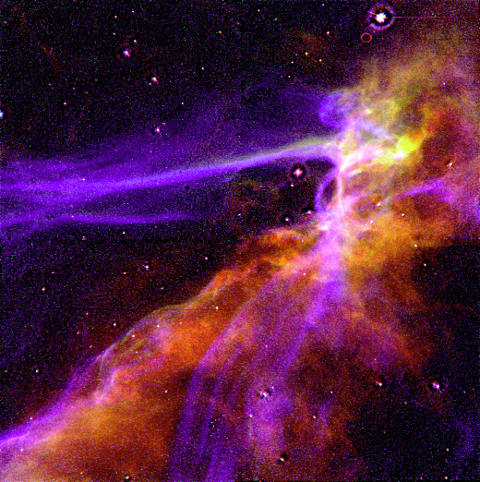
The Sloan Digital Survey used data from NASA’s Galaxy Evolution Explorer (GALEX), to map out several parts of the universe where dead stars once exploded. Six of the galaxies that experienced these type Ia supernovae are shown above. From left to right (and top to bottom) these galaxies are NGC 6038 (SN 1999cc), UGC 5234 (SN 2003W), A112539+2249 (SN 2004as), A225942-0000 (SN 2005ku), M+05-54-41 (SN 2006en), UGC 14 (SN 2006sr), UGC 8162 (SN 2007F) and IC 807 (SN 2007cp).



